Title : Impact of type 2 diabetes mellitus on sputum conversion and clinical outcomes in treatment-naïve patients with pulmonary tuberculosis
Abstract:
Objective This study aimed to investigate the impact of T2DM on sputum conversion time and treatment outcomes in treatment-naïve patients with pulmonary tuberculosis.
Methods A retrospective analysis was conducted on patients with newly diagnosed pulmonary tuberculosis admitted to Chongqing Public Health Medical Center between January 2022 and December 2024. Patients were divided into a T2DM group (n=56) and a non-T2DM control group (n=113) based on the presence or absence of comorbid T2DM. Clinical characteristics were compared between groups, and risk factors affecting prognosis were analyzed.
Results Significant differences were observed between the T2DM and non-T2DM groups in terms of age (52.4±10.6 years vs 46.8±12.3 years), BMI (24.9±3.1 kg/m² vs 22.7±2.9 kg/m²), prevalence of hypertension [37.5% (21/56) vs 16.8% (19/113)], sputum conversion time [42 (IQR: 30-61) vs 31 (IQR: 21-45) days], treatment failure rate [8.9% (5/56) vs 3.5% (4/113)] and 12-month relapse rate [10.7% (6/56) vs 6.2% (7/113)] (all P<0.05). Multivariate Cox regression analysis indicated that T2DM was an independent risk factor for delayed sputum conversion [HR = 0.67 (95%CI, 0.54-0.84), P = 0.01]. Multivariate logistic regression analysis showed that T2DM was independently associated with both treatment failure [OR=2.19 (95%CI, 1.14-4.23), P=0.01] and relapse within 12 months [OR=2.07 (95%CI,1.09-3.91),P=0.02].
Conclusion T2DM significantly delayed sputum conversion and increased the risks of treatment failure and relapse in treatment-naïve patients with pulmonary tuberculosis.
Keywords: T2DM; Pulmonary tuberculosis; Sputum conversion; Risk factors.



